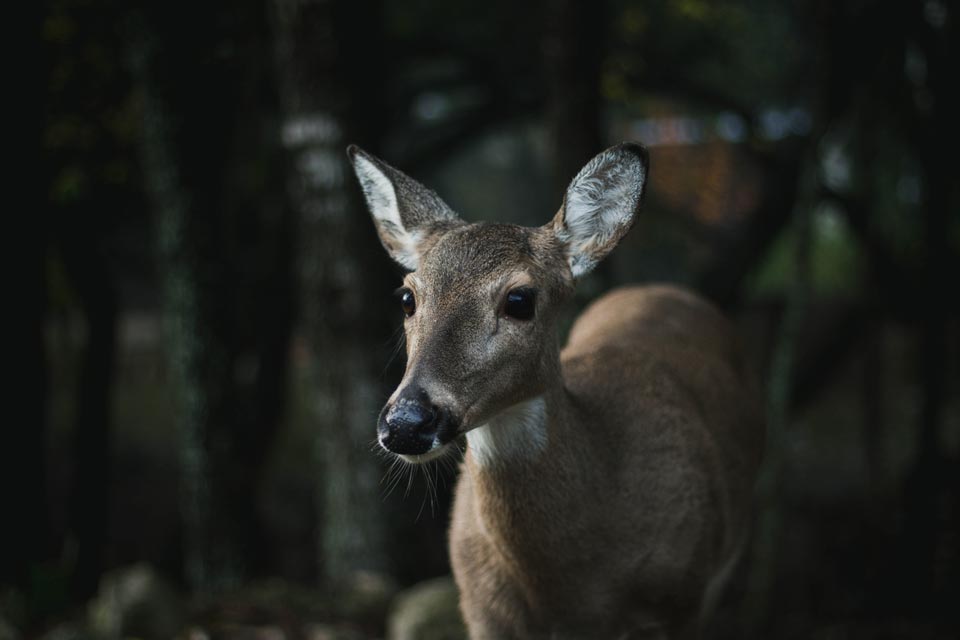For the first time in three years there are no crews searching for fawns. No incoming data sheets. No emails telling me a fawn has been born. And absolutely NO cute fawn photos from the field crews with their latest capture.
May and June are the best months to capture fawns, but our three-year study of fawn survival is over.
While I’m feeling severe spotted cuteness withdrawal, I get to look back over all the information our great crews, biologists, volunteers, and friends have worked so hard to collect in the past couple years.
So what did the current study tell us about fawn survival?
We had 2 study areas: the Northern study area – composed of Susquehannock state forest; and the Southern study area which included Bald Eagle and Rothrock state forests.
In the graph below we see fawn survival to 34 weeks in both the northern and southern study areas. Thirty-four weeks is chosen because this captures the fawns that survive through the hunting season. Fawns reach 34 weeks old sometime in January depending on the week they were born.

Fawn survival was similar between study areas. The Northern study area fawn survival to 34-weeks was slightly lower at 0.40 than fawn survival in the Southern study area at 0.51.
Both areas are beautiful state forests but they differ in one particularly important way. The Southern study area contained about 15% more agricultural land cover than the Northern study area.
Looking back at trends in fawn survival across North America we have previously discussed that increased fawn survival and agricultural land cover go hand in hand. North American fawn survival is positively associated with agricultural land cover and may help explain why fawn survival in the Southern study areas was slightly higher than in the Northern study area.
Let’s break this down a little. Fawn survival which starts near 1.0 in the first week (red box) decreases drastically in the first 8 weeks of life in comparison to the other weeks. The majority of death in young of large herbivores occurs in the first 8 weeks of life and our current study is no different.

Of the mortality sources in Pennsylvania- predators, humans, and natural causes that don’t include predation (ex: disease, starvation, abandonment) — which killed the most fawns?
In the Northern study area, we caught 82 fawns and 44 of them died. In the Southern study area, we caught 83 fawns and 36 of them died. The cause of death can be seen below.

As is common in North America- predators were the greatest source of mortality for fawns in both the Northern and Southern study areas.
If it were a competition, black bears won the fawn eating contest in the Northern study area. In the south, coyotes edged out bears and bobcats by a nose.

Harvest was the leading source of human-caused mortality. We can see it represented in the graphs where the survival curve dips around weeks 25-30 of age.

That’s a wrap on the current fawn survival. We’ll travel back to 2000-2001 in the next post to see how survival has changed!
M.S. Graduate Student
Previous articles in this series:
Fawns, Predators, and Deer Populations-what’s the bottom line on fawn survival?
Bunches, Heaps, and Gobs of Fawns
Land of the Living
A Million Ways to Die
Don’t Run that Way
Who’s Eating Bambi? – North America Edition
Next article in this series:
If you would like to receive email alerts of new blog posts, subscribe here.
And Follow us on Twitter @WTDresearch
